(written in March, 2014 and published on March 9, 2014)
It is early March, 2014, and I am almost finished with the accounts and photo editing for my 2013 chase season. The last entry to complete is this one, and it is for a day, June 1, 2013, on which I did not chase. On June 1 it was learned that, on the day prior, we lost several fellow storm chasers in the large tornado near El Reno, OK. One of the chasers was my friend, Tim Samaras. Also lost were his son, Paul, and his chase buddy Carl Young. Another local Oklahoma chaser, Richard Henderson, perished in the El Reno tornado. When tragedy strikes, I tend to try to forget about it, to move on. This tragedy struck pretty close to home, though, and I have not really looked forward to writing this. I had known Tim since 1993, shortly after I learned that he had also intercepted the Last Chance, Colorado, tornado of July 21 that year. He and I were friends, but not especially close friends. We had chased together a couple of times, swapped videos every year, e-mailed each other occasionally, and looked forward to seeing each other somewhere in the middle of nowhere every spring. I had great admiration and respect for Tim. He was nice almost to a fault!
So, where should I go with this entry? I could reminisce about good times and bad with Tim. Maybe I will a little. I am somewhat hesitant to drone on about my day on June 1 and how I learned about the deaths. My mundane comings and goings on this day are exceedingly trivial and unimportant compared to the loss of our fellow chasers. But, I think it is necessary to for me to do what I do — to share my chase experiences with anybody who cares to read about them. I am fortunate to be able to live my passion for nearly ten weeks every year. This web site exists, in part, for folks who are unable to chase storms, or unable to chase as much as they might like to. My accounts might make the reader feel a little more connected to the chase community. My accounts might help them escape their world for the Great Plains in springtime, if only briefly. And so, the following is my day as a storm chase tour director and, halfway through, a non-storm chase tour director on the day after the El Reno tornado. I’m sure that Tim would approve.
May 31 was a strange day. There are no non-strange days on which large tornadoes are encountered. Our Tempest Tours group intercepted the El Reno tornado, managed to avoid dangerous conditions in and around Oklahoma City that evening, and wound up at a lousy motel in Lawton, Oklahoma, for the night. May 31 was the last chase day for Tour 4. The group would be dropped off at the base motel in Oklahoma City around noon the following day, a Saturday. On most tours, of course, our final full chase day does not wind up very close to the base city. For tours out of Oklahoma City, our last chase day is sometimes in Colorado, or New Mexico, or Kansas or Texas or Nebraska. Rarely do we chase in Oklahoma on the day before we have to be back in Oklahoma City! The weather gods have better things to do than to make life easy for the tour director. We usually have a 4-hour to 6-hour drive staring us in the face when we get up early on “departure day”. The tour guests need to get back in time to make their afternoon flights. However, on this tour, it appeared that we would be wrapping up our chase on the last chase day, May 31, conveniently close to Oklahoma City. Excellent! I was tired, I was looking forward to a week off from the tours to recover and to recharge, and the winds on the Plains were leading us by the hand back to Oklahoma City today.
On May 31, after our encounter with the El Reno tornado, we were —- ta-da! —- in Oklahoma City! What a day we had had. Now we are pretty much exactly where we want to be —- where we need to be tomorrow. There would be no 4 or 6 or 8-hour marathon drive from Salina, Sweetwater, San Antonio or Springfield. All I had to do to wrap up this tour — on a Friday night in the midst of an urban flooding and hail and wind and tornado disaster with people fleeing their homes and jamming the roads, during big annual softball tournaments and graduations and weddings, during conventions and family reunions and proms and vacations — was to find about 13 unoccupied motel rooms in town. With the power out in much of the area. While motel clerks were cowering in shelters. With hundreds or thousands of travelers, folks just passing through, caught in the same mess that we were in. Just what were the chances that I was going to find rooms in Oklahoma City for everyone tonight? In the words of Chick Hearn: “Slim and none, and Slim just left the building.”
Well, I had botched this one. Early in the afternoon, Brian Morganti had booked rooms for his group in Oklahoma City. Brian was leading the “Doswell” group. He and Chuck and company were chasing with me and the regular (non-Doswell) tour group, but I didn’t have to worry about accommodations for his contingent. During the afternoon on May 31 I decided that I did not want to be “tied down” to a predetermined motel for the night, even if it were in Oklahoma City, because that might influence my chase decisions. I wanted to focus on the chase meteorology and strategy today. I would book rooms later, as I usually do, when I would presumably have an excellent idea of where we will be winding up the chase.
We were at a big truck stop on the east side of Oklahoma City, around 9:30 p.m. on May 31. It was dark and raining hard, but the severe weather threat had ended. There was no place to park, and my driver Steve Pekich found a dubious “spot” to park the van behind the store, amongst the big rigs. The guests went inside to find some food and restrooms, and I started calling motels in and around Oklahoma City. There was practically nothing, anywhere, much less 13 rooms. No rooms were available in Oklahoma City, none were available in Guthrie, in Shawnee, in Edmond or Norman. Great. Now who is having the last laugh — me or the storm gods?! Calls to our base motel in Oklahoma City just ring-ring-ring now. It turns out that the place was side-swiped by a weak tornado. What are the odds that the base motel for a storm-chase tour gets damaged by a tornado on the last day of the tour?
After more than 30 minutes of calling, I was getting desperate. (At least the cell phone network was working!) It was probably about 10 p.m. I called a place or two in Lawton, which is about 90 minutes southwest of Oklahoma City. There was little or nothing available at our favorite motels, but the clerk at one said to try the “Executive Inn.” I did, and the Executive Inn had rooms for us! I was relieved, but we had to drive to Lawton. Bummer.
It took close to two hours to make the drive to the motel in Lawton. Some roads were flooded around Oklahoma City, parts of trees littered the roadways, and cars were abandoned along ditches. Interstate 44 southbound from the airport area was jammed due to flooding, so we were on the surface streets for a while in order to bypass that mess. Once we were on I-44 south of the problem area, it was clear sailing to Lawton. We found the Executive Inn, and it was a dump. There was a big party going on in the lounge with loud music. It took about 30 minutes to fully check in. I handed out the key cards, took care of a problem room or two, and fell asleep quickly. May was done.
June 1 was a sad and surreal day. It might have been even stranger than May 31 for me. On Saturday morning, June 1, Tempest guest Tom Trott showed me a picture of a knife that was stuck into the wall of his motel room to keep the curtains properly positioned. Is that American ingenuity or what?! Yes, the Executive Inn was like a low-budget disaster movie in real life, but we got out of there alive. Best of all, I slept like a real executive for eight hours. But, now it was “back into the vans” one more time for this group. I had to play tour director for just a little while longer. Our tour guests were still abuzz about their experience the day before, but many were discovering that their flights out of Oklahoma City Will Rogers Airport were cancelled. The airport and vicinity had been hit by strong winds and a tornado on the previous evening, and some aircraft were damaged. Some of our guests had room reservations for the night at our base motel (the Holiday Inn north of the airport), but it had sustained some damage, there was no power, and it could not accommodate any guests! Even worse, it had no coffee. That is just nuts! We ran over to McDonalds for some take-out breakfast food and began the drive back to OKC with the two vans.
This was my plan for the day. Once the guests were dropped off, in less than two hours, I would be on my own. From Oklahoma City, I would drive one of the now-unneeded Tempest vans to Tempest headquarters in Arlington, pick up my Xterra, and be absolutely without a care or responsibility for a week! I could chase on my own if I wanted to, but the weather pattern was looking rather slow for the next several days. I would drive to my sister’s house in Littleton, Colorado. That would be the perfect place to rest and to recover prior to my next three tours, all based in Denver.
At least a couple of guests with cancelled flights out of OKC said that they could get flights out of Dallas-Ft. Worth. They were interested in getting a ride to DFW with me. As we were leaving Lawton for OKC, I was thinking that if enough guests wanted to go to DFW, then we could split up the group. One van could go to Oklahoma City, and the other one, with me as driver, could go to DFW. That would save me about three hours of being on the road today. The idea worked great, as several guests wanted to go to DFW instead of being stuck at OKC. One guest, Julie, graciously volunteered to join the DFW group, as only eight people are permitted per van, and the “OKC” van had one over the limit. I would have to drive Julie back north from DFW to OKC later today —- no biggie!
Steve Pekich and Chris Gullikson ferried six Tempest guests back to Oklahoma City, via the El Reno tornado damage track. They were able to find a camera that a guest had dropped onto the side of the road during the chase yesterday! Imagine losing your pictures of the widest tornado ever recorded—doh! But, our guest got the camera back, and the images were salvageable. They returned to the motel and found the local area had suffered light-to-moderate wind damage, but the staff vehicles were okay, thank goodness. Guests who were dropped off at the OKC airport had to wait a long time —- a day or two —- for a flight to get them out of town. I suppose that if your tour’s base motel and airport are going to be damaged and closed due to tornadoes and severe weather, it’s better to have it occur at the end of the tour rather than at the beginning. Tempest was fortunate that the next tour was based out of Denver. Flying into OKC for Tour 5 would have been problematic on June 1. Steve and Justin Pletsch were tasked to drive two Tempest vans to Denver from Oklahoma City, and they began the trek on Saturday afternoon.
Meanwhile, I had an easy drive from Lawton to Arlington, TX, with five Tempest guests. After dropping the folks off at DFW airport, I traded the van in for my Xterra, and Julie and I motored back north to Oklahoma City. Julie was regretting leaving her suitcase in the “OKC” van. She was now learning that she would be stuck at the OKC airport for a while. She was trying to get back home to Australia! Lesson learned —- never separate oneself from one’s stuff during the tour!
On June 1 was the first game in Round 3 of the NHL playoffs. My Los Angeles Kings were playing in Chicago, but it was an afternoon game, and there was no way for me to watch it. I had my iphone to my ear most of the way to OKC — on iheart radio — and the Kings hockey radio station feed. The Kings had disposed of the Blues and the Sharks in the first two rounds, but they lost this game (and lost the series) to Chicago. This would not be the only emotional setback today.
Beginning with the weather briefing in Ardmore on Friday morning and up to this point, I had been very busy chasing, tour directing, driving or sleeping. I had had very little time for e-mail or Facebook or casual phone conversations. I knew a few things about the El Reno tornado, though —-
—- The Weather Channel chase team had been flipped by it and miraculously survived.
—- It was a monster, and many other chasers had close calls with it.
—- A local Oklahoma City TV on-air meteorologist had advised locals in the path of the storm to drive south to avoid it. This seemed to lead to much of the traffic and congestion which made storm evasion difficult for many chasers, and many chasers were unhappy about this.
—- There seemed to be concern in the chase community that some chasers might have been victims of the El Reno tornado. There were no details, though. There was no substantiation. I was out-of-the-loop for the most part, though, and unable to stay up-to-speed on these things.
—-a handful of chaser videos of the event were already online, and some were, uh, insane, with stuff flying into chase vehicles
I was curious to get online and to learn more about the storm and what chasers were saying about it. But, I was driving all day and would have to wait a bit longer. I had just joined Facebook two months earlier, and I knew that I was missing all of the stories, all of the cool photos, and all of the banter by my FB friends about the big El Reno tornado. When I got myself into a motel room for the night, I could open up my laptop and catch up with e-mail and Facebook.
I dropped Julie off at the OKC airport and gassed up the Xterra. It was nearly 7 p.m., so there was another two hours of daylight remaining. I decided to do a little tornado-damage tour before finding a motel. First on the list was the area around the Holiday Inn, on Meridian and SW 15th St. There was quite a bit of sign damage, poles down, and busted windows. But, the structures along Meridian appeared to be okay. Brian and Chris had their vehicles parked in the Holiday Inn lot during the storm, and, luckily, both escaped without damage.
Okay, let’s go west to see what the El Reno tornado hit. I knew that the El Reno tornado wound up right along Interstate 40, east of El Reno, and killed at least two motorists. As I drove through this stretch of I-40, considerable structural damage to a handful of buildings was visible. Signs were really messed up, and scattered debris littered the sides of the Interstate. I knew that The Weather Channel vehicle with Mike Bettes had been tossed off of U.S. 81 south of El Reno, so I headed down 81. There wasn’t too much to see here, about three miles south of the Interstate. Perhaps the vehicle or vehicles that were hit had been towed away already. It had been 24 hours since the tornado. I knew that the tornado was at its widest and strongest just east of U.S. 81, so I drove onto the dirt roads in that area. I photographed a house or two that had substantial damage, but were still standing. There was a section where the wheat, or the straw, was oddly caught in the barb wire fence. And, there were two big pick-up trucks that were in the field along an east-west road. These were in really bad shape, and looked like they had been rolled. A little farther north and east, there was a compact car along the road. It was thrashed. There were no indications that it was a chaser’s vehicle. I had no idea what kind of car it was, and there wasn’t a license plate on it. I took some photographs of the pick-ups and the car. It was humbling. The only thing I could really think of at the time was that death likely came to anyone who might have been in these vehicles.
The area to the northeast of here was also impacted and was more developed. There was quite a bit of damage, and law enforcement was not allowing access to these areas. From what I could tell, and based on what I had seen the day before, the El Reno tornado was biggest and strongest over farmland. As it weakened, it impacted these neighborhoods close to the Interstate, but it wasn’t strong enough at that point to sweep houses off of foundations. I went back west to 81 along a different dirt road and took a few more photographs. The sun was about to set, and it was time to get out of here.
I drove west on Interstate 40 for an hour or so, got something to eat, and paid for a room at the Days Inn in Clinton. Boy, was I going to sleep well tonight! And I was going to sleep in really late tomorrow morning. I lugged all of my stuff into the room and opened the laptop to check e-mail first. An e-mail from Brad Carter caught my eye. Brad was a chase buddy, and he had driven for Tempest several times. I had not been in contact with him for a few years, though, as he retired from chasing and was spending a lot of time in his new vacation home in the mountains west of Denver. Brad wanted me to call him — his e-mail said that a chaser friend of ours had perished in the El Reno tornado. His e-mail had been sent a couple of hours earlier. It was after 10 or 10:30 p.m. now, and I gave Brad a call. I had no idea who it might have been, and I was shocked to hear Brad say that Tim had died the day before, along with Tim’s son Paul and Tim’s chase partner, Carl Young.
Brad chased with Tim a lot from the late 1990s to about 2002, and he was pretty shook up about the terrible news. It helped Brad to chat with me about Tim’s passing, and he wondered if I might have known what had happened. Brad and Tim lived across the street from each other in Lakewood, Colorado, for 30 years. In the mid-1990s, Tim asked Brad if he was interested in going on a storm chase. Brad became one of Tim’s regular chase partners soon after, and by 2001 was helping Tim deploy probes in front of tornadoes. And, all of a sudden now, Tim was gone.
Brad’s wife is a very close friend of Tim’s wife, Kathy, and she learned of the deaths from Kathy on June 1. That afternoon, a Denver news station phoned the Carter residence to speak to Brad about the El Reno tornado. Brad’s wife took the call, and since Brad was at their cabin in the Rockies for the weekend, she called Kathy to see if Tim wanted to talk to them. It had not been long since Kathy had been notified of the death of her husband and son by the authorities in Oklahoma, and she told her the tragic news.
Brad told me that Tim and Paul and Carl had been chasing in a Chevy Cobalt. I had no idea what a Chevy Cobalt was, or what one looked like. While on the phone with Brad, I “googled” Chevy Cobalt, and realized that just a few hours earlier I had photographed the Samaras chase vehicle.
I had not seen Tim for a couple of years, and had not corresponded with him in quite a while. Even though we both were chasing for most of May and June every year, we didn’t cross paths very often. I guess he spent more time underneath the updraft base than I did! He was immersed in his “deployment” missions in order to understand tornadoes better, and I was immersed with the chase tours. I saw him last in 2011, I think, as we were simultaneously checking into the same motel in Guthrie, Oklahoma. He was getting a bunch of rooms for his group, and I was getting a dozen or so rooms for our two van loads. Tim was his usual low-key self. “Yeah,” he said almost sheepishly, “the motion in the clouds around that tornado today was unreal!” Naturally, Tim had been on some dubious Oklahoma back roads in order to be right next to the action, while our tour group watched from the pavement about five miles away.
Brad and I shared some “Tim” stories over the phone. Brad knew Tim a lot better than I did, having sat next to him for perhaps tens of thousands of miles. Though both Brad and I were stunned and dumbfounded to a certain degree with regard to Tim’s death, I think we both could “comprehend” it. Tim’s deployment missions were dangerous. It is not difficult to visualize a thing or two going wrong on a “normal” storm chase and finding yourself in big trouble, much less what Tim was doing. We speculated that the small vehicle that Tim and Paul and Carl were utilizing on May 31 may have been a factor.
Things kind of change into “surreal” mode when one receives horrible news like this. Brad and I talked for quite a while, and after the call I was hoping that I had been of some help to him. He said that he was glad to be able to talk to friend who also knew Tim. My head was kind of spinning even more by now. I had been leading tours and chasing for about 40 days almost non-stop, and now this awful news materializes just as I get a chance to unwind. My fatigue, though, was nothing compared to the pain being felt by the Samaras family and even the Carter family this night.
I phoned my good friend and occasional chase partner Dean Cosgrove with the news of Tim’s passing. Dean and Tim had chased together on occasion during the 1990s. The three of us had intercepted the Last Chance tornado in July, 1993, and we three had quite a bit of chase success in the years afterward. I recall Tim, Dean, and myself walking together into a chaser or severe weather conference somewhere, in the late ’90s, and Chuck Doswell sees us and shouts: “It’s Murderer’s Row!!” I thought that was awfully high praise; I was honored to be thought to be among chaser elites like Tim and Dean!
The news had not gone public yet. Around midnight, I let my Facebook friends know that Tim and Paul and Carl had perished in the El Reno tornado.
Tim was extremely generous and unselfish with regard to sharing his love of storms with others. He was always upbeat, he had a bit of a sly sense of humor, and he put storms and storm chasing first, ahead of any self-serving stuff. He wasn’t particularly interested in being in the spotlight. He just wanted to chase and to learn more about severe weather and tornadoes. In September, 2000, he and I were at a Severe Local Storms conference in Orlando. He graciously allowed me to stay in his hotel room which had a spare bed so that I could save a few bucks. During this time, Tim was very excited about possible research grants from the National Geographic Society for his tornado research. I was sworn to secrecy about it, though, as nothing was set in stone yet! He was giddy! To get paid to do exactly what you love to do was a dream-come-true for him. Of course, Tim soon after began a long association with the National Geographic Society which allowed him to live his dream.
As is often the case in a tragedy, Tim and Paul and Carl became tornado victims due to a series of circumstances, poor decisions, and the vagaries of Mother Nature. It would have to be a “perfect storm” of bad luck to have what happened “happen”, and that is what happened. We know a lot of the details that led up to the last few minutes of life for Tim and his chase team. The guys were in a small, compact car. Apparently they were working on a smaller budget compared to previous years, and they were saving on fuel expenses by utilizing the Chevy Cobalt instead of their big, gas-guzzling chase truck. They were tracking the El Reno tornado on its north side, and probably looking for an opportunity to sweep in front of it, drop a probe alongside the road, and get out of the way. While west of U.S. 81, they had a good read on the situation. They could see that the storm was largely rain-wrapped, was moving east, and looked quite potent. As they continued just east of U.S. 81 on an unpaved farm road, the tornado was increasing in intensity and size dramatically, and had turned somewhat abruptly towards the northeast, into their path. Before the camcorder was turned off about this time, Tim knew that they were in a bad situation. We don’t know if they were unsure what to do or unsure which direction to head or not. A chaser doesn’t really “expect” a two or two-and-a-half-mile wide tornado to suddenly be bearing down on them, but this is what Tim and Paul and Carl were dealing with along Reuter Road. They probably were monitoring a “sub-vortex” tornado or two to their south as they cruised east of U.S. 81. What they might not have realized soon enough was that these sub-vortex tornadoes WERE “sub-vortex” tornadoes. The sub-vortex tornadoes were just part of a tremendous low-level circulation, spawned by the “mother” tornado. The mother tornado was soon overtaking their east-west road, with rain-curtains coming at them from the southeast. Winds must have increased from 30 or 40 mph to over 70 mph in a matter of moments, and they did not have a quick exit to the north. At the first indication of peril, they might have been best off if they had turned around and headed back west as fast as possible. We don’t know if they tried to head quickly to the east or tried to “ride it out” or not. It is possible that the small Chevy Cobalt was unable to quickly get them east as fast as they needed to go, due to the strong headwinds, the loose and increasingly wet road surface, and the comparatively low power of the compact vehicle. It is likely that a fast-moving sub-vortex in the large circulation impacted them.
If Tim had made it out of this situation alive, I suspect that he would be imploring chasers to take a step back and to reassess their chase tactics if it involves being in close proximity to tornadoes. He would be saying that it was a really poor idea to be operating so close to a tornado in an HP storm in a small vehicle on dirt roads on a day when the parameters were practically “off-the-charts”. Of course, we already know all of that, but in the heat of the chase, we aren’t thinking about that. It is easy for us chasers to become focused on “getting the shot” or “getting the adrenaline rush”, or, for Tim, “getting the data.” Chuck Doswell calls this “target fixation.” Making 100-percent sure that you have a way out of any potential tight spot can be pushed to the back of your mind when a tornado is nearby.
I headed to my sister’s house in Littleton, just southwest of Denver, on June 2. The memorial service for Tim and Paul was held in Littleton just a few days later, and I was able to attend. The chase community and I were still numb. It will be strange, and sad, to chase in Colorado now, knowing that I won’t be running into Tim.
Disaster and tragedy can come at any time for any of us, and when we are out and about, driving around severe storms, the chances of something bad happening go up. Storm chasers chase because we enjoy the challenge of getting to the right storm and experiencing the power and grandeur of the atmosphere. We know that the danger element increases when we are near severe storms, but storm chasing can still be a very safe endeavor. We can’t live in fear, we just have to be smart. We need to reach for the sky, live each day to the fullest, and lead by example. As Tim would say, “Follow your passion — the atmosphere is the greatest show on earth!”
—-
Tim was nice enough to share some of his tornado footage with me for a storm-montage-music video that I produced around 2008 (Tim’s clips are marked with a “TS”). Strange, surreal, and sad…

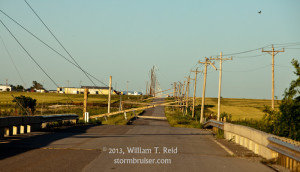
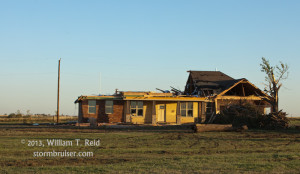
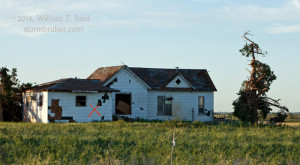
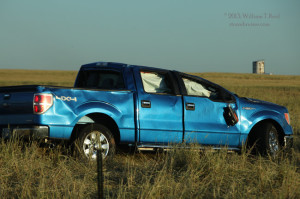
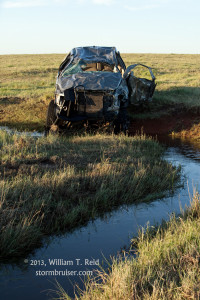
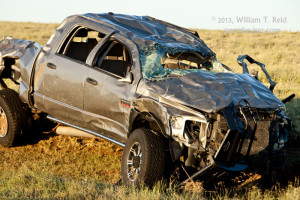
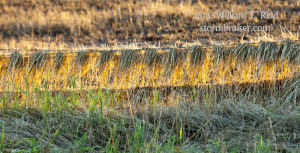
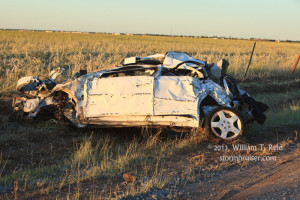
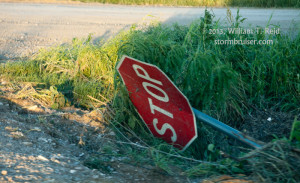
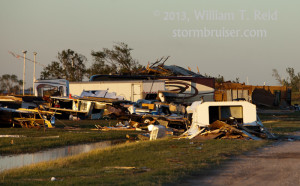
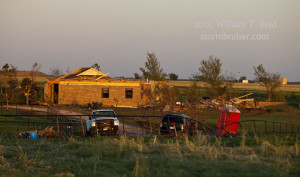
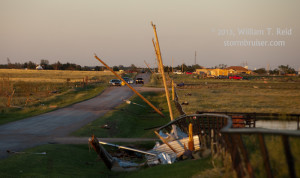
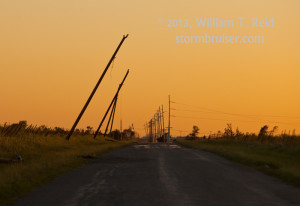
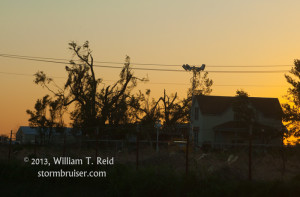
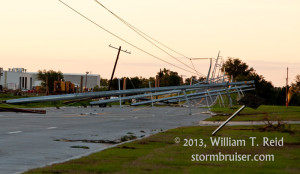
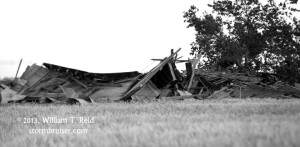
Leave a Reply
You must be logged in to post a comment.